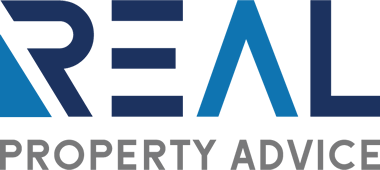Recently I had the privilege of talking to a new client who found us via our website and was looking for some property advice. (I guess he found the right website  then!)
then!)
Let’s call him Mark and his wife Jane.
Mark gave me an outline of his current financial and property status and their goals for the future.
His story is actually quite common.
Mark wanted to upgrade his principal place of residence (PPR) and either sell his existing investment property or keep it and also turn his principal place into an investment property.
Upon Mark telling me his story, some big red flags became glaringly obvious with what he wanted to do.
Mark has been married to Jane for a few years and they had a young family together. He had a well-paid job and created quite a lot of equity in their principal place of residence. Mark and Jane had also entered the property investment arena and bought a brand-new investment property a few years ago, in a new emerging suburb in the greater Brisbane area.
(The mention of a new property in a new suburb was the first red flag in our discussion.)
Mark went on to tell me that they had almost paid off their principal place of residence and had very little debt on it. Now that the children were getting a little bit bigger, they wanted something that had a larger yard and some more bedrooms in case a third child came along. Jane was currently not working full-time as her young family fully occupies her days. (yep been there, done that!)
Mark and Jane’s situation is most definitely not unique.
I started asking Mark some questions, firstly; how much is owed on their investment property? Secondly how much was owed on the principal place of residence as he had alluded to there being very little debt.
It turns out there was not very much debt at all, somewhere well under $100,000. Then I asked what ownership name the investment property was held in, and Mark’s answer was, both his and Jane’s name.
Mark said their PPR was in his name only as he had bought the property well before he was married. This is also not an uncommon situation where one partner has their own property before marriage, and the ownership is never transferred into both names.
Mark told me that he was considering one of two things: either selling his existing home and buying another principal place of residence or keeping both existing properties, the home and investment place and buying a new principal place of residence.
My thoughts after our discussion
Upon fully digesting Mark’s financial and ownership situation my comments to him were as follows:
- The current ownership structure is problematic for what he wanted to do
- There is very little to no equity in the investment property which means that if a financial problem ever arose, it would not be the first property the bank chose to sell
- As there was no actual deposit put into the investment property purchase, it was financed on a cross collateralisation via the one bank. This means the bank looks at both securities and both loans almost like they are one and assesses its risk and rate accordingly. It also means as mentioned in point 2 above, that if a problem arises the bank will sell the house easiest to sell i.e. with the most equity. In this instance, that will be the principal place of residence.
- Keeping existing principal place and investment property and buying a new PPR would mean all the money for the new PPR would be non-deductible debt.
- Lastly, the income from their current PPR and turning it into an investment property would be offset against a very small loan and held in the larger wage earner name for tax purposes.
What Mark wanted to do initially sounded straightforward but practically had some complications around their anticipated actions. These complications also severely impacted on what Mark and Jane were trying to achieve.
They were looking to set their family up in the best way possible by improving the quality of life through a better PPR and enlarging their property investment portfolio. However, the reality was, that neither of those things would be cost effective, tax effective or asset protective if they continued on their current strategy.
Where to from here?
My suggestion to Mark was that we bring in a specialised financial planner to review the overall financial goals of what Mark and Jane wanted to do. I also suggested legal advice for structuring and accountancy advice for the tax implications.
Mark and Janes’ story totally reiterates and demonstrates the absolute need for a correct team around you when making large financial and life changing decisions around money.
There is nothing wrong with what Mark and Jane wanted to do in terms of a goal, but without the right assistance they would have been attempting to build their wealth on very shaky foundations.
I suggested to Mark we review the investment property and its ability to be offloaded in a timely manner and develop an outline of the new principal place of residence that they were looking to buy.
Mark and Jane’s amended strategy would highly likely involve selling both properties because:
1)The investment property had not performed well in the past four years and was in a marginal location for future performance.
2) The potential sale of the principal place of residence was needed to release the full equity for their next home, without complications and added structures.
This would allow Mark and Jane to buy their own home with as little debt as possible. It would also mean that any further investment property purchasing would not be cross collateralised against their new home.
This type of planning and structure would allow Mark and Jane to acquire investment properties and upgrade their principal place of residence in the most secure, tax effective and wealth protective environment possible.
Happy Client
Mark was exceptionally satisfied with our conversation, the ability that we had to move quickly, and our skills in developing a plan specific to his and Jane’s needs.
If you want more information about buying property, need strategic advice or our buyers agency service, then contact us here or call now on 1 300 66 77 89.
Since 2004, Scotty North has been helping people buy the best properties for their needs at prices that simply speak for themselves.
Scotty has been instrumental in bridging the gap between financial planning and traditional real estate transactions through his property advice model.
Scotty North is a Qualified Property Investment Advisor (QPIA), with accreditation’s in financial planning, mortgage broking and real estate.
By carefully considering his clients’ goals and planning for market changes via demographics and trends, Scotty designs a future proof outcome not only specific to the client’s needs but dynamic in its execution with performance indicators and exit strategies built in.

